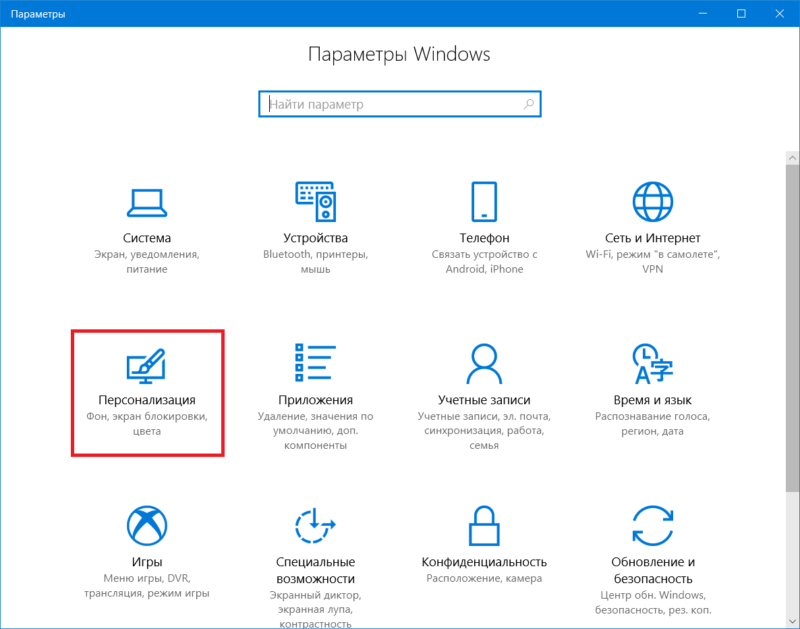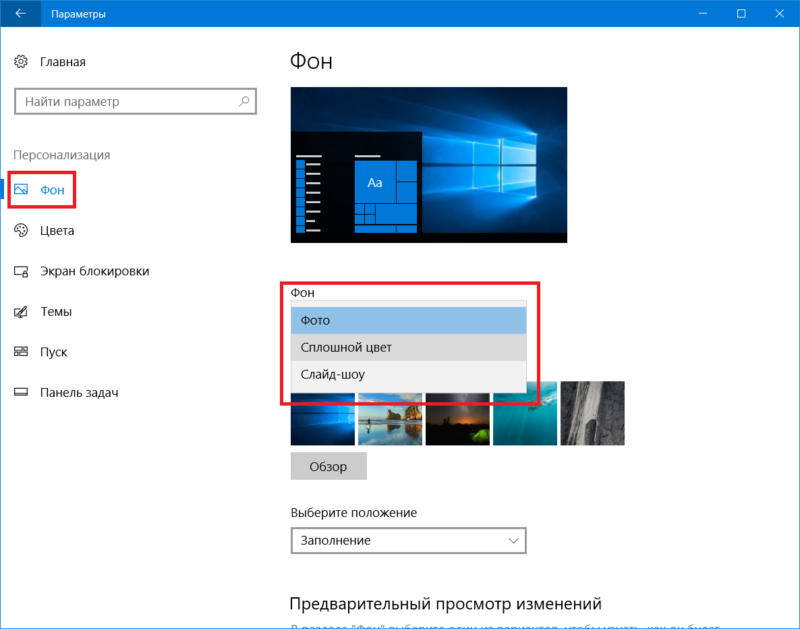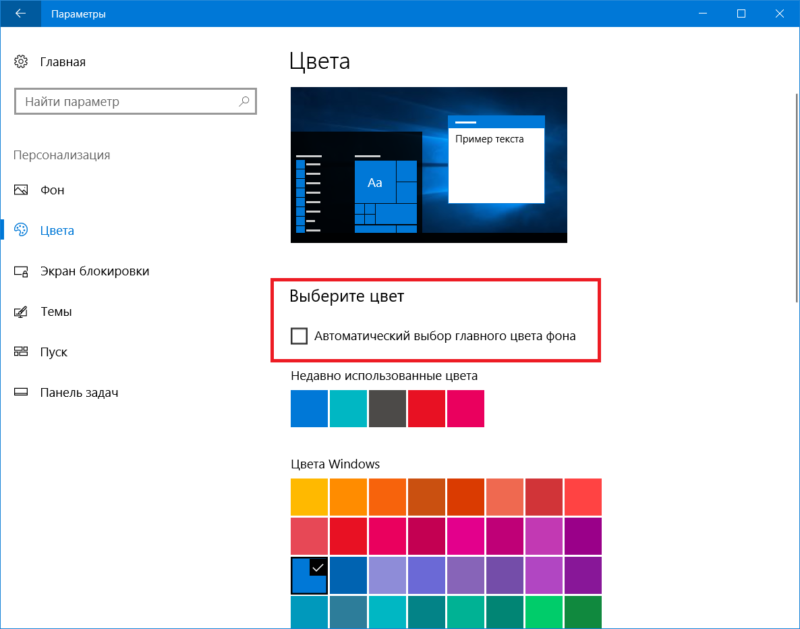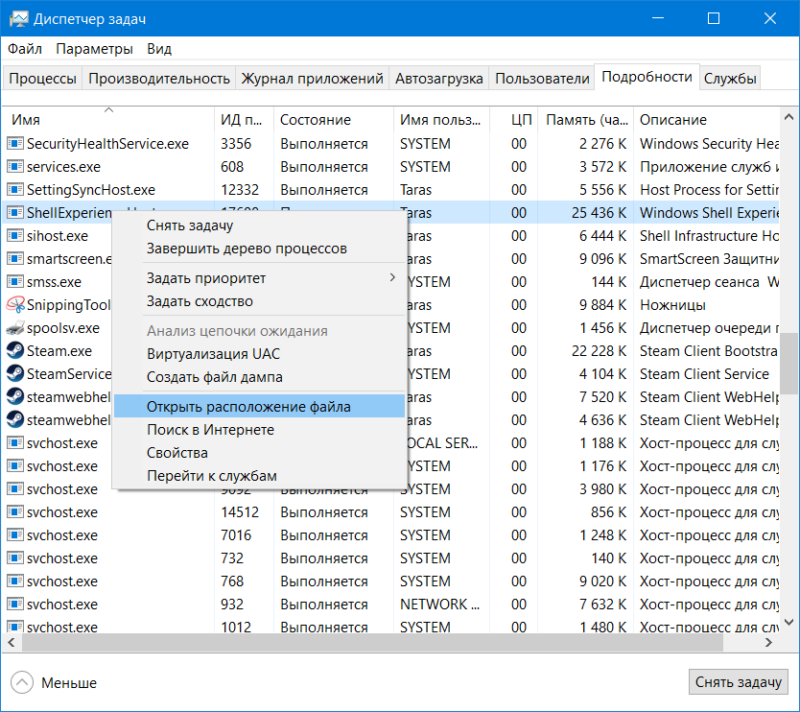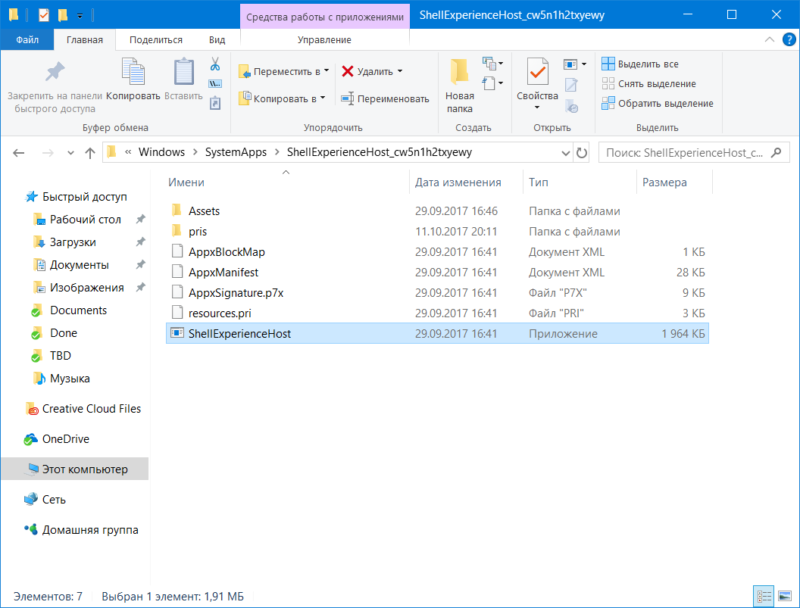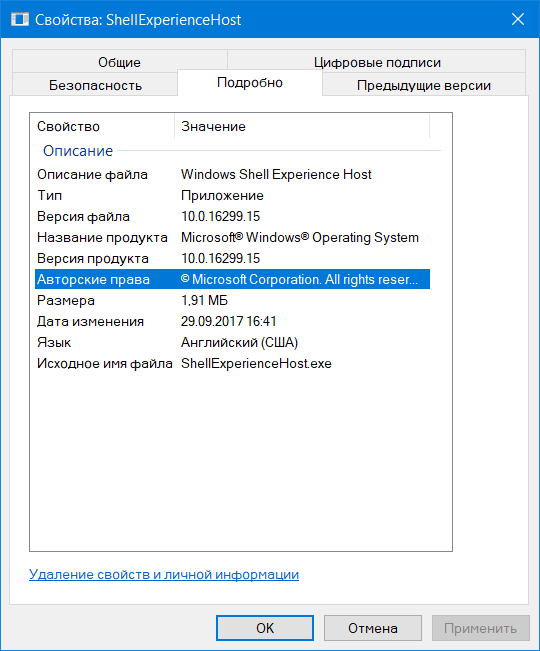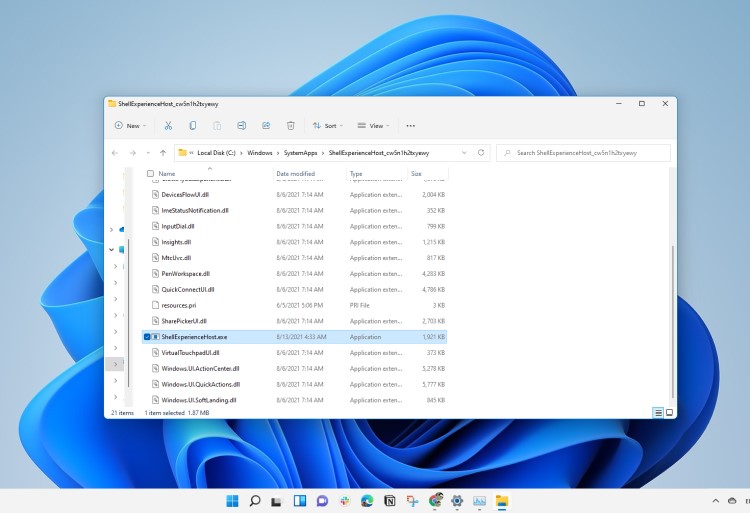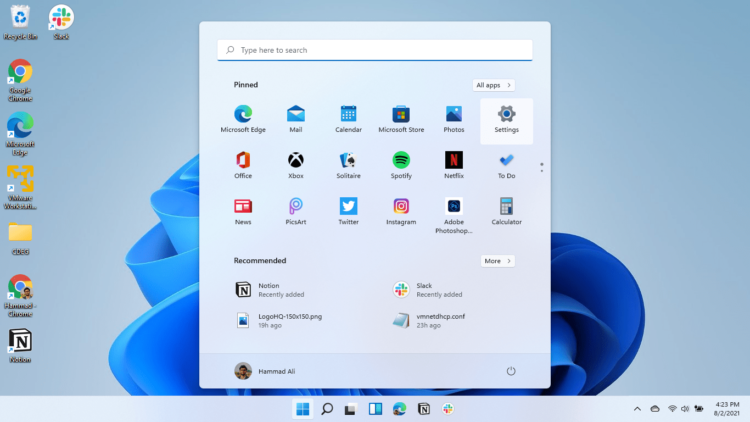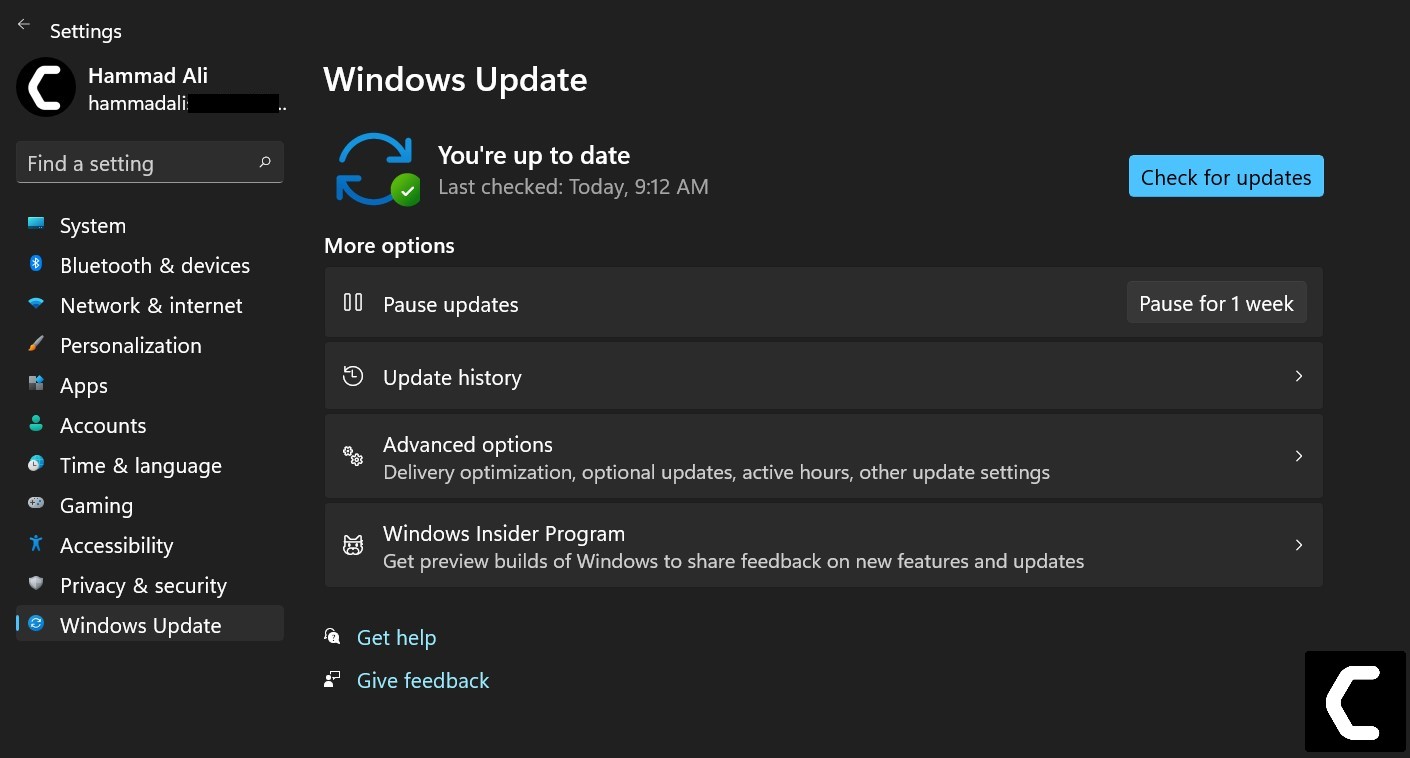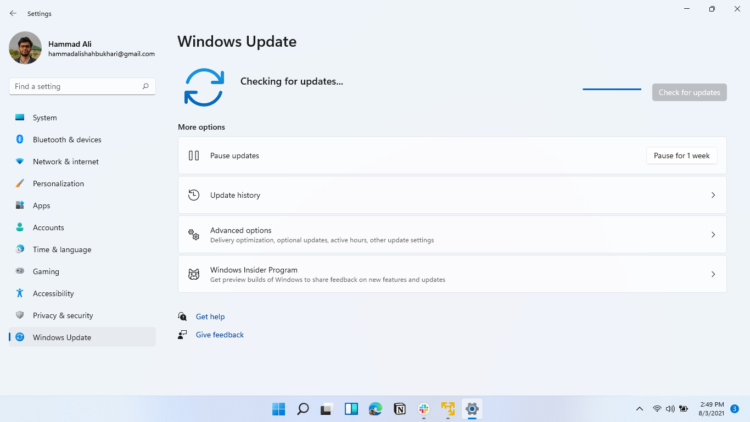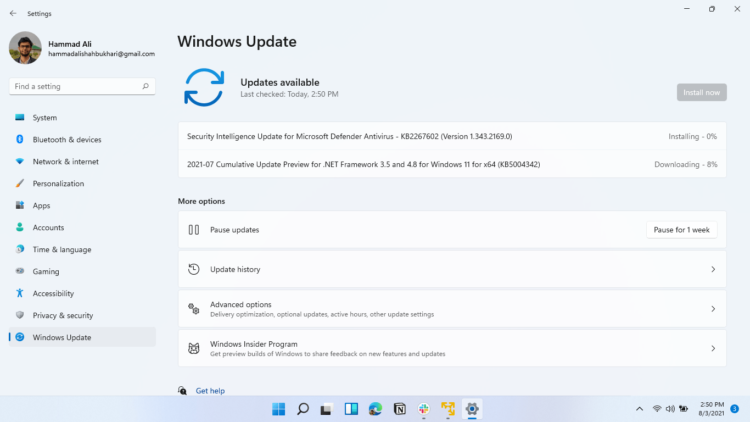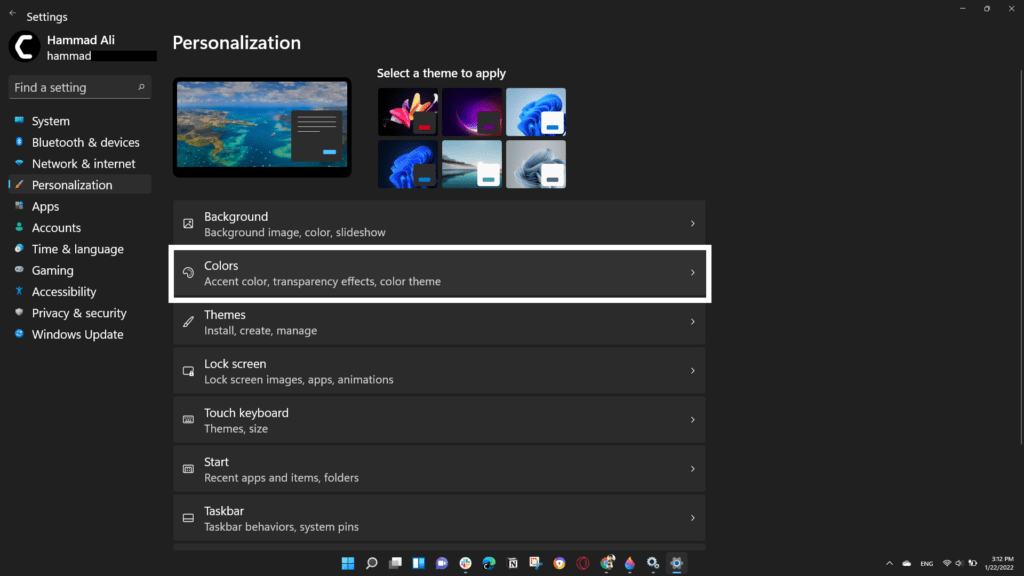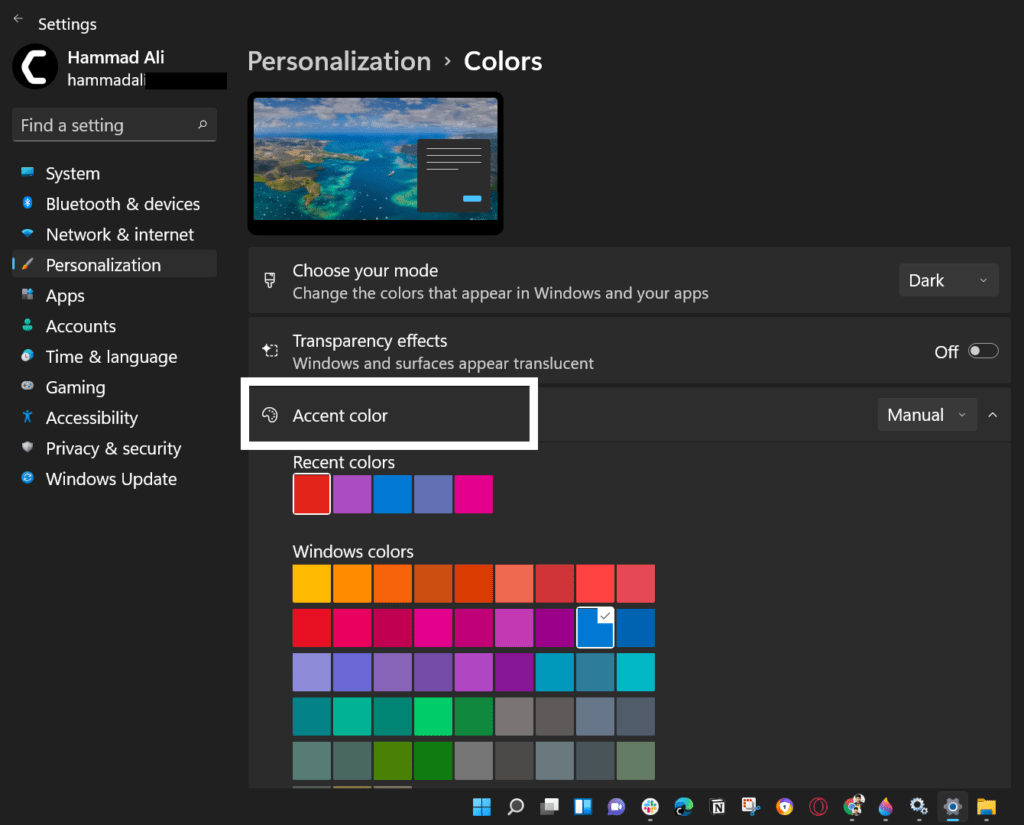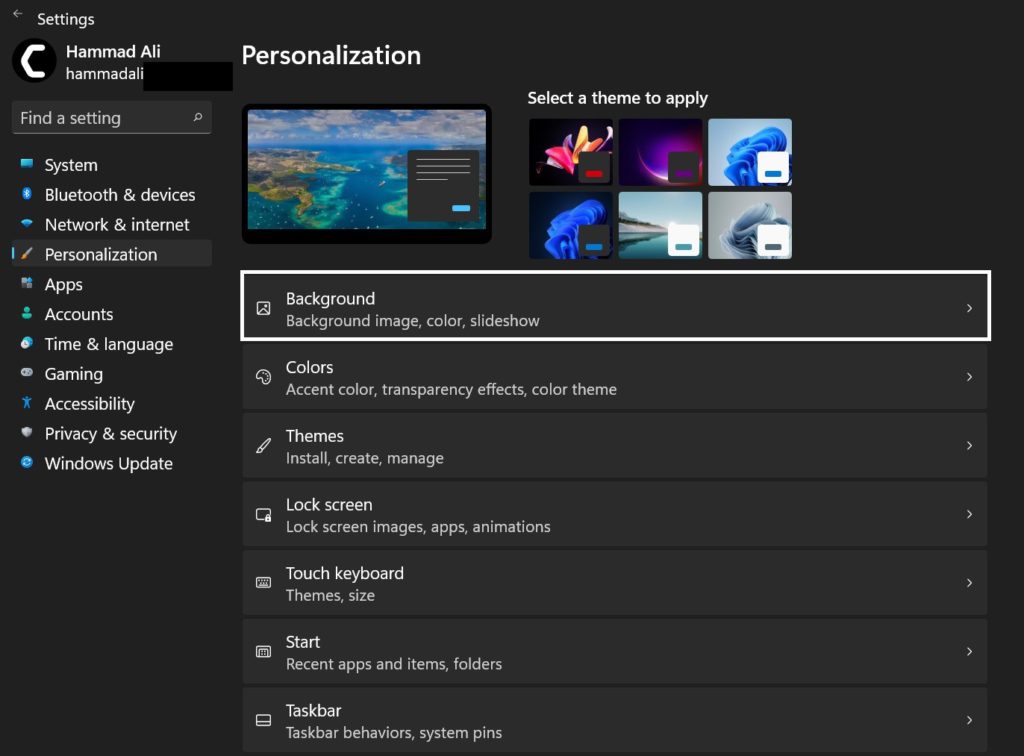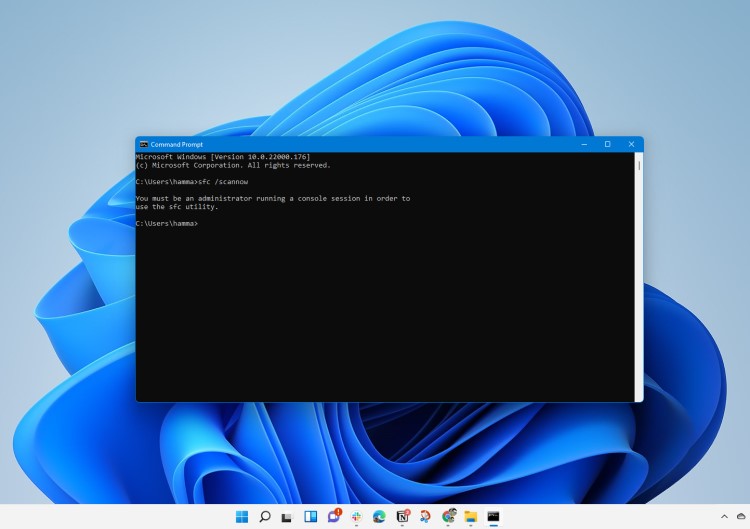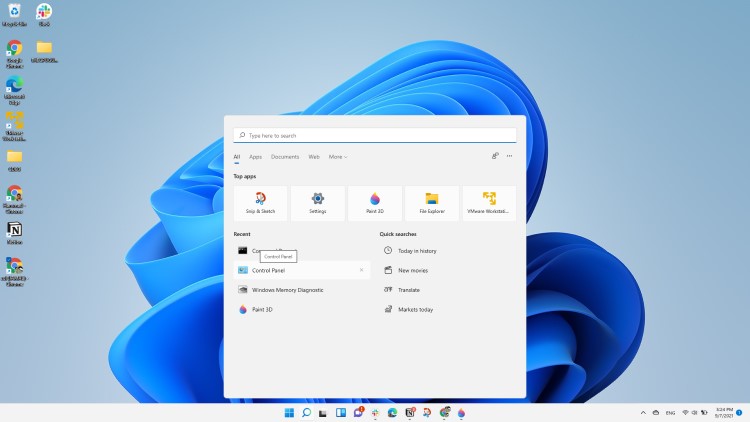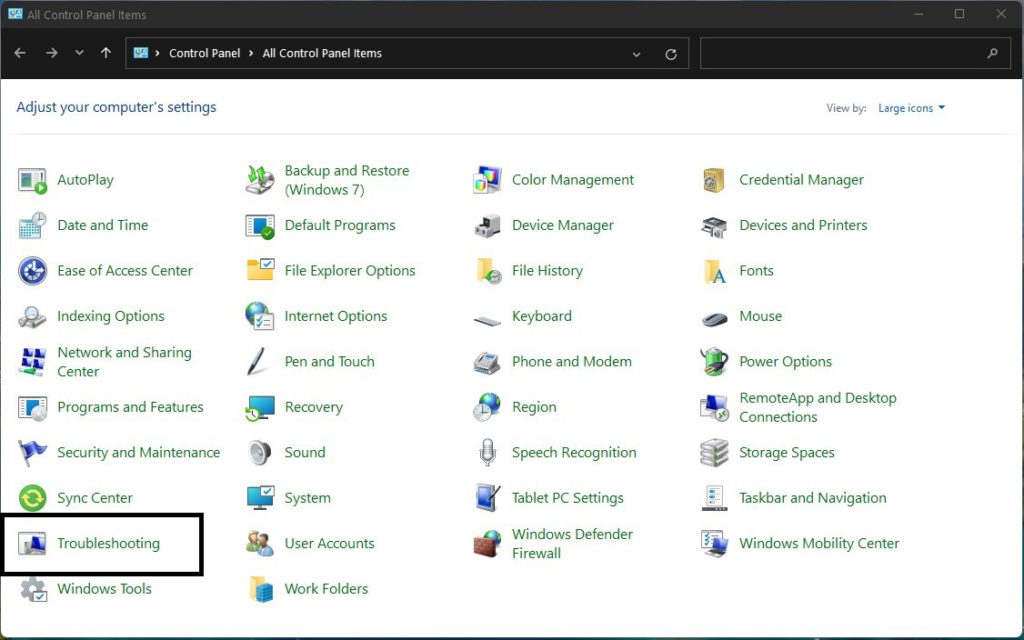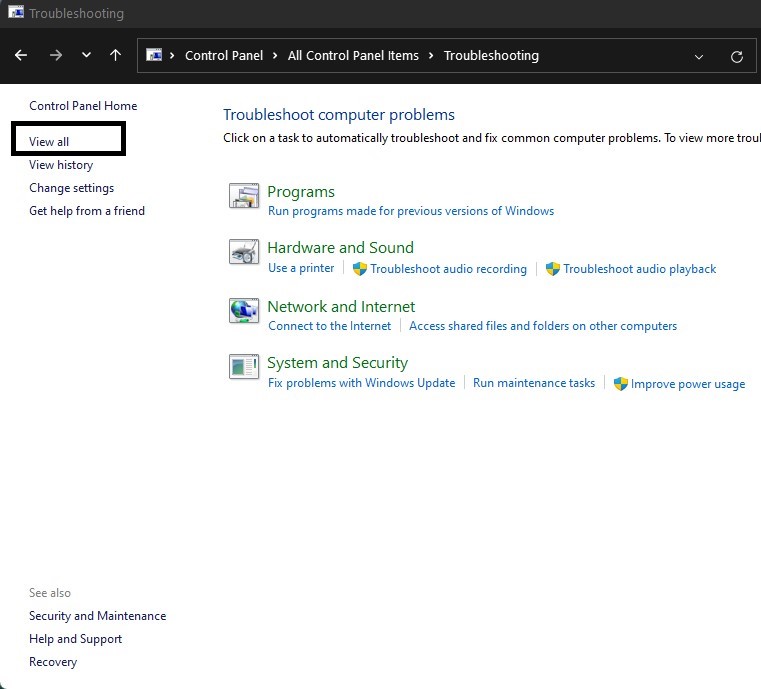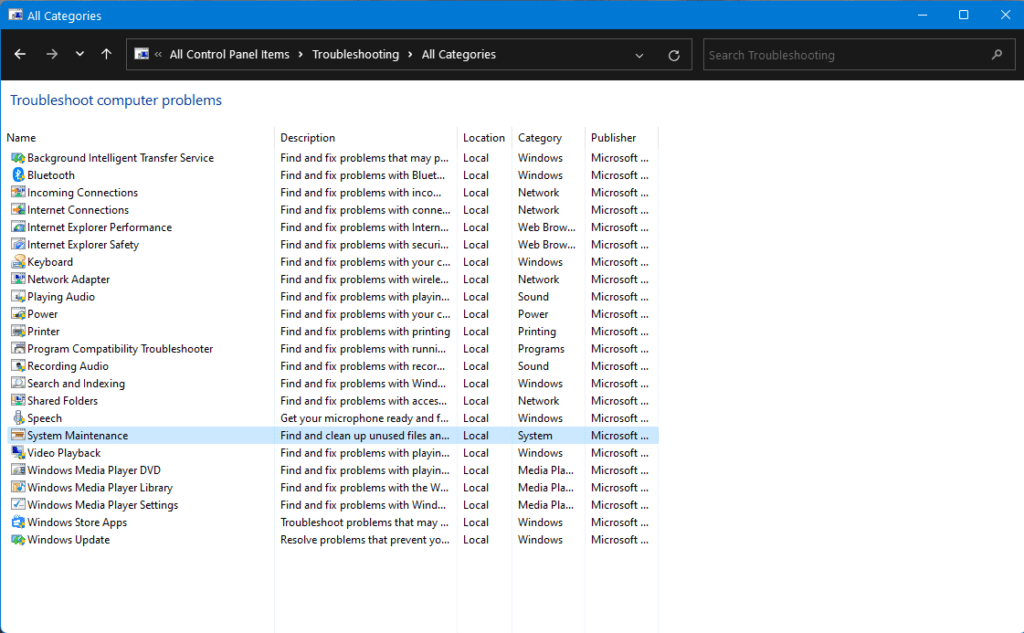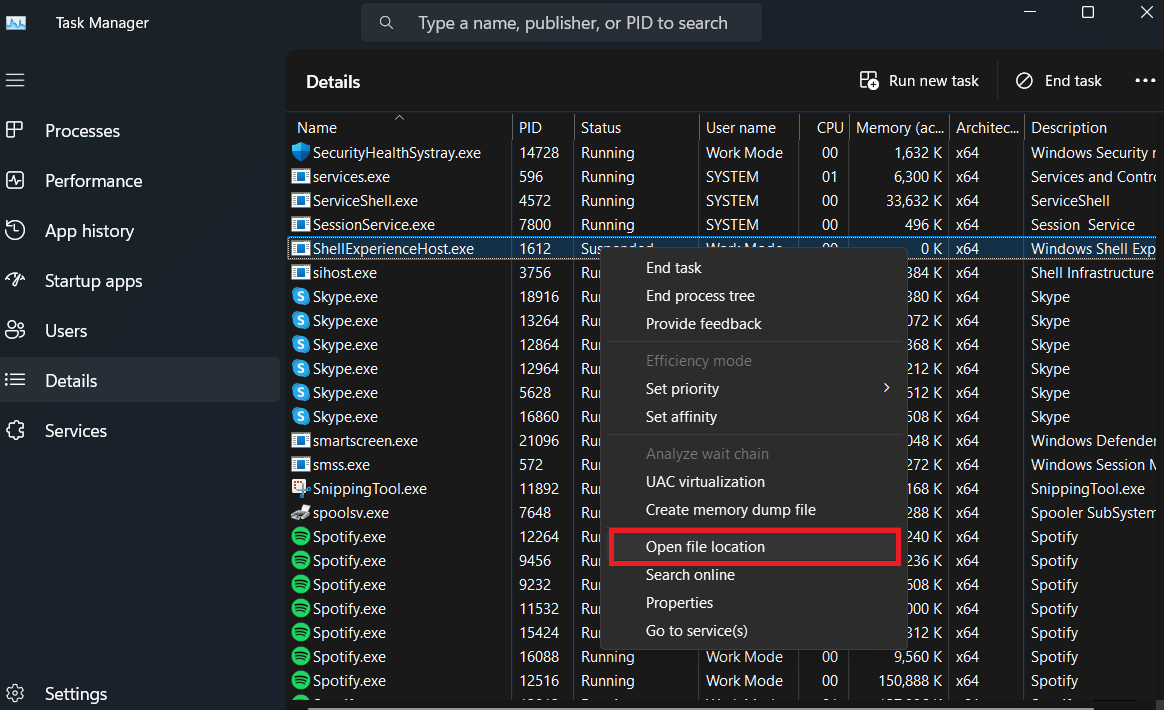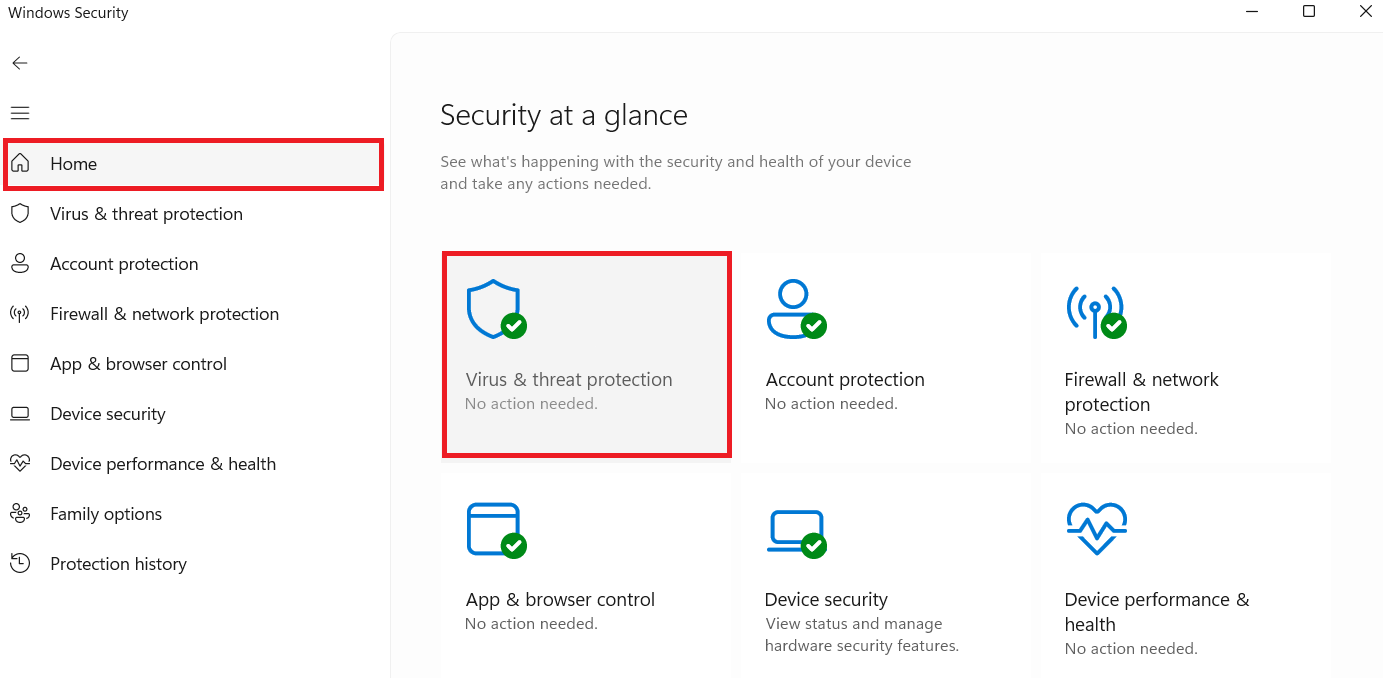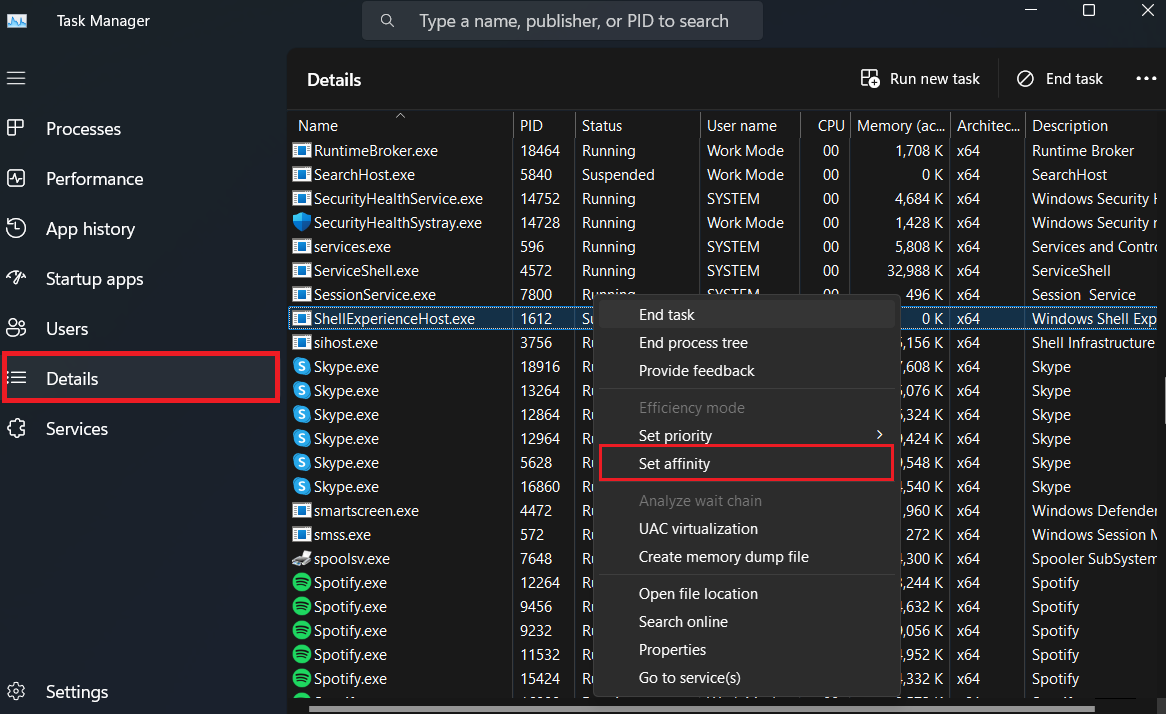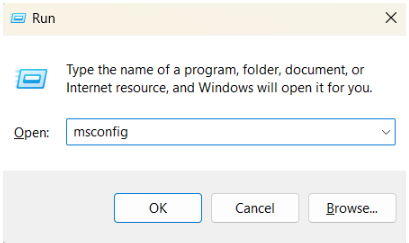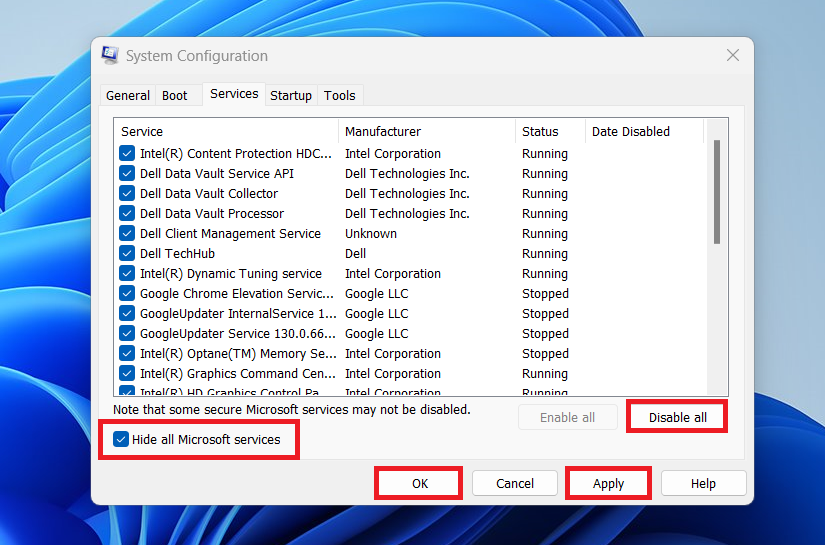Продолжаем серию статей, где разбираем предназначение различных процессов, найти которые вы можете внутри Диспетчера задач. Потребность в подобных статьях объясняется простым любопытством пользователей (многим интересно, зачем нужны эти десятки процессов) или необходимостью узнать, почему тот или иной процесс в определенных условиях начинает больше потреблять ресурсы компьютера, а именно память, процессор, диск или сеть. Эта статья рассказывает о том, что такое Хост Windows Shell Experience и что делать, если он постоянно грузит процессор.
Хост Windows Shell Experience – что это?
Сразу же отметим, что этот процесс является частью Windows 10. Это системный компонент, который работает всегда и обеспечивает вам работу универсальных приложений Windows. Кроме того, на его цифровые плечи возложена задача управлять графическими элементами интерфейса, вроде меню Пуск, прозрачности панели задач, всплывающие меню сетевого подключения, громкости, центра уведомлений и так далее. Хост Windows Shell Experience также управляет изменением фонового изображения рабочего стола, если пользователь активировал слайд-шоу.
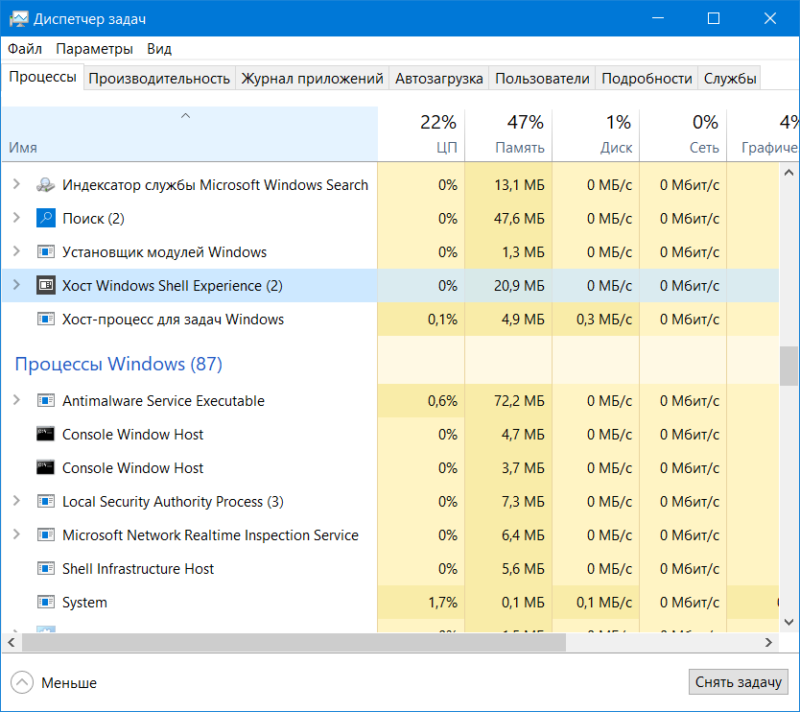
Хост Windows Shell Experience в своей привычной среде обитания. 0% нагрузки на ЦП и десяток мегабайт в оперативке.
Само имя процесса подсказывает его предназначение. Windows Shell – оболочка Windows. Окна, панели, кнопки и другие элементы интерфейса – все это работа Хост Windows Shell Experience.
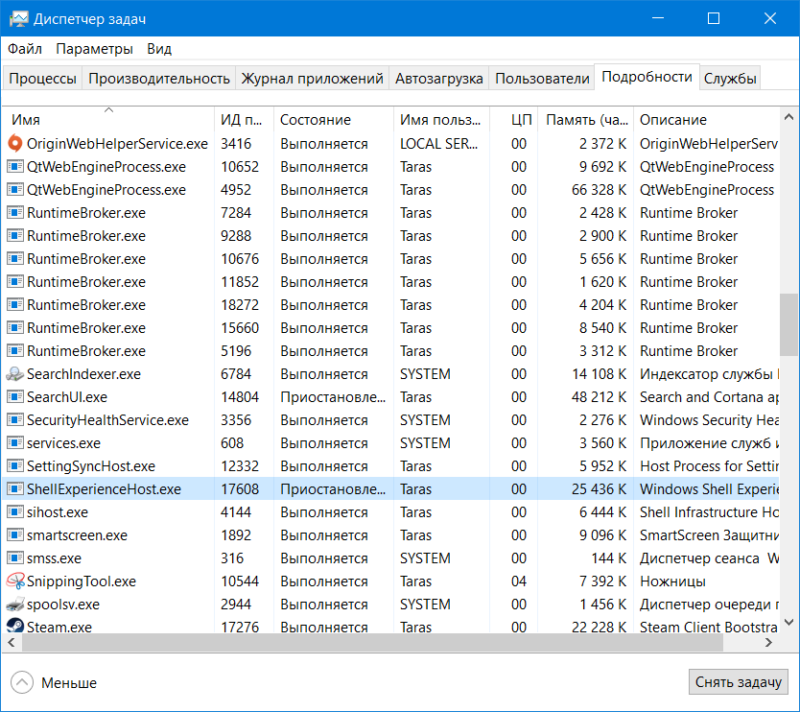
Вид сбоку, а точнее — из вкладки «Подробности».
Когда Windows 10 только появилась на свет и начала распространятся в виде бесплатного обновления, многие пользователи жаловались на неадекватное поведение процесса Хост Windows Shell Experience. Он сильно грузил процессор, а также потреблял много памяти. Хотя эти проблемы (они в основном были связаны с процессом апгрейда с Windows 7 / 8.1 до Windows 10) уже исправили, пользователи иногда все-таки сталкиваются с тем, что Хост Windows Shell Experience начинает дичать.
Хост Windows Shell Experience грузит процессор
В обычных условиях Хост Windows Shell Experience фактически никак не влияет на производительность компьютера. Несмотря на важность его существования, нормально работающий процесс Хост Windows Shell Experience не грузит процессор вообще, а объем потребляемой памяти не превышает нескольких десятков мегабайт. Нагрузка на процессор может слегка подскочить, когда вы открываете приложения или перемещаете окна, но она опять же, не должна превышать лишь пары процентов.
Как уже было сказано выше, бывают случаи, когда Хост Windows Shell Experience начинает постоянно напрягать процессор на уровне 20-30%, а объем потребляемой памяти вырастает до пары сотен мегабайт. В таком случае вам надо попытаться собственноручно решить ситуацию.
Как отключить Хост Windows Experience Host
Вручную вам не стоит его отключать, да и вы не сможете это сделать. Это важный системный процесс, отвечающий за графику в Windows 10. Даже если вы снимите эту задачу в диспетчере задач, система активирует ее повторно буквально спустя несколько секунд. Причину повышенной нагрузки таким образом не решить. Для этого есть другие методы.
Прежде всего проверьте наличие обновлений для операционной системы и установленных приложений. Быть может, обновление Windows или какого-нибудь из установленных приложений исправит ситуацию. После обновления дайте компьютеру пару минут на то, чтобы прийти в чувство. Можно также попробовать перезагрузить систему (в очень большом количестве случаев помогает именно перезагрузка) и затем понаблюдать за поведением процесса. Если ничего из этого не помогло, двигайтесь далее.
Зачастую проблемы в работе процесса Хост Windows Shell Experience спрятаны в системе слайд-шоу рабочего стола. Вполне нормально, если в процессе смены фонового изображения процесс немного нагружает процессор / память. Но после этого нагрузка должна упасть до минимума. Если не падает, сделайте следующее:
- Нажмите Win + I (вы можете открыть Параметры любым удобным вам способом) и перейдите в раздел Персонализация – Фон.
- Вместо Слайд-шоу установите параметр Сплошной цвет. После этого понаблюдайте за работой процесса. Если нагрузка упала до минимальной и держится в пределах нормы, можно попробовать установить одно изображение в качестве фоновой картинки.
Другая причина может прятаться в система автоматического подбора акцентного цвета в зависимости от установленного изображения. Если на рабочем столе у вас картинка с синими цветами, цвет системы будет автоматически установлен на синий. Попробуйте отключить эту функцию.
- Откройте параметры (Win + I) и затем перейдите в раздел Персонализация – Цвета.
- Снимите флажок с параметра Автоматический выбор главного цвета фона. Можете также установить любой другой цвет, чтобы сбросить этот параметр. Опять же, пару минут последите за процессом. Если все пришло в нормальное состояние, значит вы нашли причину повышенной нагрузки на процессор. Если же не помогло, двигайтесь далее.
Третий вариант – отключение параметров прозрачности. Он расположен на том же экране, что и автоматический выбор главного цвета фона. Отключите параметр Эффекты прозрачности и посмотрите на эффект.
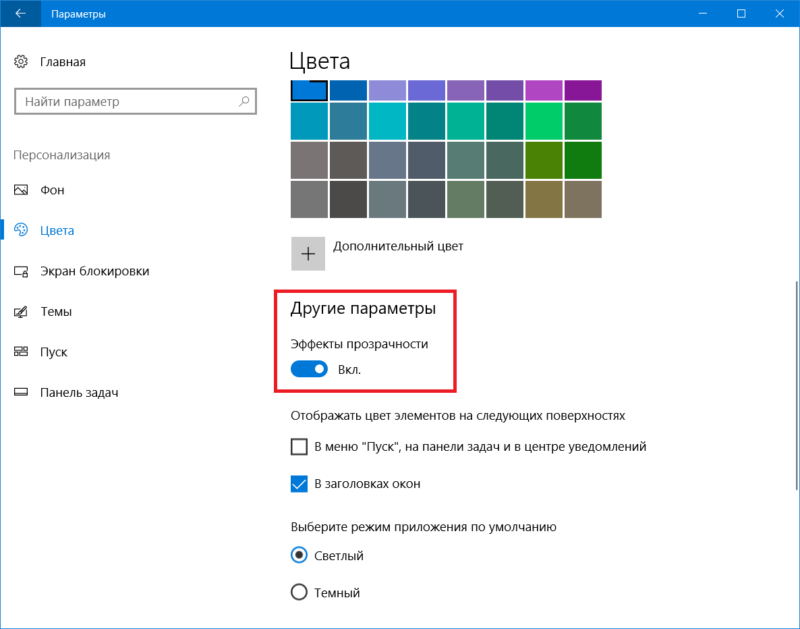
Хост Windows Experience Host – вирус?
Скорее всего нет. На момент написания этой статьи не было случаев, когда какой-то вирус выдавал себя за системный процесс Хост Experience Host. Все же есть способом, который поможет вам лишний раз убедиться в том, что вы имеете дело с подлинным системным компонентом, а не какой-то заразой.
- Откройте Диспетчер задач (все возможный способы открыть Диспетчер задач описаны в статье «Как открыть Диспетчер задач») и перейдите на вкладку Подробности.
- Найдите в списке процессов ShellExperienceHost.exe. Кликните на строчку Имя, чтобы отсортировать процессы по алфавитному порядку и скорее найти нужный вам.
- Нажмите правой кнопкой мыши по ShellExperienceHost.exe и выберите Открыть расположение файла.
- Система должна открыть Проводник по адресу C:\Windows\SystemApps\SHellExperienceHost_cw5n1h2txyewy. Файл ShellExperienceHost будет автоматически выделен.
- Далее кликните по файлу правой кнопкой мыши и выберите Свойства. Откройте вкладку Подробно и убедитесь, что описание соответствует аналогичному на скриншоте.
Если у вас все именно так, как мы описали, тогда Хост Windows Shell Experience точно не является вирусом, а причина повышенной нагрузки или потребления ресурсов заключается в другом. Попробуйте описанные выше способы, чтобы привести этот системный процесс в адекватное состояние.
You just saw Windows Shell Experience Host High CPU Usage Consumption in Task Manager?
And,
You would be wondering what even Shellexperiencehost.exe/startmenuexperiencehost is?
Recently, users have reported that when they opened the Task Manager they saw that Shellexperiencehost.exe is using almost 90% of the CPU which was very unusual.
First of all, you don’t need to worry much because you are not alone in this and many users were trying some wrong fixes for Windows Shell Experience Host on Windows 11.
But,
We have compiled a list of the best solutions for you to fix the startmenuexperiencehost.exe error.
What is ShellExperienceHost exe?
Shellexperiencehost exe is an executable file and stands for Windows Shell Experience Host.
It was introduced in Windows 10, and can also be found in the latest versions of Windows 11.
Windows Shell Experience Host is an important part f Windows OS and its role is to display universal apps in a windowed interface. The process also handles the taskbar, Start Menu transparency, calendar, clock, etc.
Shellexperiencehost.exe is allocated in C:\Windows\SystemApps\ShellExperienceHost folder and has a file size of 1,653,600 bytes.
Windows Shell Experience Host helps other graphical parts to make Windows more attractive and when it does use the resources which leads to high CPU usage which is sometimes not normal so, disabling it will lead to malfunctioning of other systems related to Windows OS.
Also Read: LockApp.exe? What’s It? Is It Safe?
Is ShellExperienceHost a virus?
It’s totally safe as Windows Shell Experience Host is a legitimate program digitally signed by Microsoft Corporation.
As it is legitimate but hackers can still attack the program to make changes and carry out their illegal activities through shellexperiencehost.exe.
Moreover, if you are a Windows XP or Windows Vista and 8 users and if you see this startmenuexperiencehost process running on your PC then it’s an unwanted program as this file no longer works there.
Also, we can clear our doubt that the Shellexperiencehost exe is a virus or not by checking the file location as it should be located in its default file location when it was originally developed.
But still, to be on the safe side you can check if there’s a virus or not through Task Manager:
- Press together Ctrl + Shift + Esc keys to open Task Manager.
- Go to details and look for Shellexperiencehost.exe
- Also on your right side under the description column make sure its name is correct.
- Right-click on it and select Open file location.
- If it is located at C:\Windows\SystemApps\ShellExperienceHost
And if it’s not in the given address, then it might be a virus or a spyware.
Solution 1: Update Windows 11
Sometimes your outdated PC is the main cause of the Windows Shell Experience Host High CPU usage
For the best performance of your PC, you need to make sure that your Windows OS is up to date.
and with new updates, the bugs or errors like startmenuexperiencehost and high memory usage will be fixed.
So, here is how you can update your Windows 11 OS:
- Click on the Windows icon
- Click on the Settings icon and a new window will pop up
- Select Windows Update from the left menu
- The new window will pop up
- Then click on Check for updates button.
- If there is any update it will start updating the PC
- It will take some time to update Windows OS and after that, you can restart your PC.
Also Read: FIX: Microsoft Block Level Backup Engine Service?
Solution 2: Turn Off Automated Accent Colors For Background
So, if your background changes automatically then you need to disable the automated accent colors.
As every time the background changes your PC will pick a new accent color it will lead to high CPU usage as it’s the responsibility of the Windows Shell Experience Host.
Here’s how you can turn off automatic accent colors on Windows 11:
- Press Windows key + I to go to Settings
- In the Settings screen choose Personalization
- Now click on Colors
- Click on the Accent color option and change it to Manual
- Restart your PC and check if Windows Shell Experience Host high CPU usage is fixed or not.
Solution 3: Turn Off Slideshow Background To Fix Windows Shell Experience Host
If turning off didn’t help you fix shellexperiencehost.exe high CPU usage then you should try to get over slideshow background.
As whenever your background changes shellexperiencehost.exe will use a lot of memory so
Here’s how you can turn off slideshow backgrounds in Windows 11:
- Press Windows key + I to go to Settings
- In the Settings screen choose Personalization
- Now click on Background
- Click on Personalize your background and set it to Picture or Solid color
- After some time check if Windows Shell Experience Host high CPU usage is solved or not.
If the above solution didn’t help you fix the shell infrastructure host then continue to SFC scan
Also Read: MMC.exe Error Blocked
Solution 4: Perform a System File Check to Fix shellexperiencehost.exe High CPU Usage
Sometimes the damaged file can lead to startmenuexperiencehost.exe high CPU usage on Windows 11 and your program will be unable to run.
So, the Sfc(System file checker) helps you scan the errors and replaces them if the shell infrastructure host replicated itself.
Here’s what you need to do to fix the Windows Shell Experience Host error:
- Open Command Prompt as an Administrator, press Windows Key + X
- Or, search “Command Prompt” in the Startup menu, then choose Run as administrator
- Type “sfc /scannow”
- Be careful with the spaces between commands.
- This action may take up to 20 minutes so don’t interrupt it.
- After that restart your PC and check if shell infrastructure host high CPU usage is solved or not.
Having a High CPU Error CHECK OUT: What is Acrord32.exe?
Solution 5: Run System Maintenance Troubleshooter
This system maintenance troubleshooter will look for errors all-around your PC and will fix them if you couldn’t manage to fix startmenuexperiencehost from the above solution.
Moreover, the corrupted files that will get fixed with it will also solve Windows Shell Experience Host High CPU Usage.
So, here’s how to run a system maintenance troubleshooter:
- Click on the Search icon
- Select Control Panel.
- Now look for Troubleshooting
- In the left pane click on View all.
- And select System Maintenance.
After the troubleshooting is done you need to run your Windows in Safe Mode.
And you do this by following the steps below:
- Press Windows Button + R Key
- The Run Dialogue Box will appear
- Type “msconfig“ and press Enter.
- The System Configuration window will open and then click on the Boot tab.
- Now checkbox the Safe boot option.
- Then click on Apply and OK for the system to reboot in safe mode.
- After rebooting check if shellexperiencehost.exe high CPU usage is fixed or not.
Also Read: FIXED: WaasMedic Agent.exe High Disk Usage?
If troubleshooting didn’t work out for you in fixing Windows Shell Experience Host then continue to clean boot your PC.
Solution 6: Performing a Clean Boot Using MSConfig to Fix Windows Shell Experience Host High CPU Usage
Clean boot will help you to eliminate the unnecessary applications which are running on the backend.
Also, it will help fix startmenuexperiencehost and will replace the corrupted file that is helping in high CPU usage.
And shut down any applications which are conflicting with each other.
Here is how to perform a Clean Boot:
- Press Windows Button + R Key
- The Run Dialogue Box will appear
- Type “msconfig“ and press Enter.
- The System Configuration window will open
- In the General tab uncheck Load system services and Load startup items box as this will only use services issued by Microsoft when your PC will reboot.
- Now Select the Service tab and uncheck all the unnecessary service
- Only check those who are not using high CPU usage
- And your clean boot is done and the unnecessary services are eliminated
- After restarting your PC your startmenuexperiencehost.exe error on Windows 11 will be fixed.
Conclusion
So, these are the best fixes we could get for you in fixing Windows Shell Experience Host High CPU Usage in Windows 11 and
Disabling startmenuexperiencehost from your system is not that much of an easy job and also we don’t recommend it to so that’s why we have provided you with the best possible solutions.
It’s best you try all the solutions and if you have any other fix related to the Shellexperiencehost.exe error or any type of question then just let us know in the comment section below.
FAQs
-
Where is Windows Shell Experience Host located?
Windows Shell Experience Host is allocated in C:\Windows\SystemApps\ShellExperienceHost where it was stored default when developed.
-
How to check GPU Usage of Werfault?
You can check GPU Usage of Shellexperiencehost.exe by:
1. Gooing to the Task Manager.
2. Look for Shellexperiencehost.exe and click on the GPU usage column -
Why does ShellExperienceHost exe crash?
ShellExperienceHost exe crashes due to corrupt files or when malware attacks your PC.
-
Is ShellExperienceHost exe a virus?
ShellExperienceHost exe is not a virus unless it replicates itself or harms your computer.
Zul is an avid gamer with a passion for RPG and racing games. He enjoys playing games like Need for Speed and Grand Theft Auto 5 and is also skilled at fixing errors and crashes to enhance the gaming experience. Zul stays up-to-date with the latest gaming news and enjoys sharing his knowledge through writing gaming guides and articles.
Follow him on Twitter
Quick Links
-
What Is the «Windows Shell Experience Host» Process?
-
Okay, So Why Is It Using So Much CPU and Memory?
-
Can I Disable «Windows Shell Experience Host?»
-
Could This Process Be a Virus?
If you’ve ever noticed a process named «Windows Shell Experience Host» in your Task Manager window, you may experienced a fleeting curiosity and then gone on about your business. Here’s what that process is and why it can occasionally eat up some people’s CPU and Memory.
This article is part of our ongoing series explaining various processes found in Task Manager, like Runtime Broker, svchost.exe, dwm.exe, ctfmon.exe, rundll32.exe, Adobe_Updater.exe, and many others. Don’t know what those services are? Better start reading!
What Is the «Windows Shell Experience Host» Process?
«Windows Shell Experience Host» is an official part of Windows. It’s responsible for presenting universal apps in a windowed interface. It also handles several graphical elements of the interface, like Start menu and taskbar transparency and the new visuals for your notification area flyouts—clock, calendar, and so on. It even controls certain elements of desktop background behavior, like changing the background when you’ve got it set to slideshow.

When Windows 10 first shipped, a lot of people experienced problems with «Windows Shell Experience Host» going a bit wild with CPU and memory usage. While the number of problems experienced has fallen—likely due to updates since then—some people are still reporting these issues.
Okay, So Why Is It Using So Much CPU and Memory?
Under normal operations, «Windows Shell Experience Host» will consume none of your CPU, occasionally spiking up to a few percentage points when graphical elements are changed, but then settling back down to zero. The process typically hovers around 100-200 MB of memory use. You’ll also see that go up occasionally, but settle back down right away. If you see the process regularly consuming more CPU or memory than that—some people see a consistent 25-30% CPU or several hundred MB of memory use, for example—then you’ve got a problem to solve.

So, how do you solve your problem? We’ll start by making sure your PC and universal apps are updated and then run through some other potential causes of the issue.
Update Your PC and Universal Apps
Start by making sure that Windows is updated. It’s possible there’s a fix already waiting for you. Next, you should make sure that all your universal apps are up to date. Open the Windows Store, click your user icon next to the Search bar, and then select «Downloads and Updates.»
In the «Downloads and updates» window, click the «Check for updates» button and then, if updates are available, click «Update all.»
After updating, give it some time and see if the problem has resolved. If not, move on to experiment with some common potential causes for problems with the «Windows Shell Experience Host» process.
Check These Common Potential Causes
If you’re still having problems after updating everything, the next step is to run through some common potential causes. Try these one at a time and see if your problem’s fixed. If not, revert the changes and move on to the next.
By far the most common cause of this problem seems to be using a slideshow background in Windows. It doesn’t happen to everyone, of course, but when it does, you’ll see a few hundred extra MB of memory consumed each time the background changes, which doesn’t get released after the change. You may also see CPU usage spike to 25% or so, and not settle back down. To test this potential cause, head to Settings > Personalization > Background and change your background to a solid color. If that solves your problem, you can also experiment with a single picture background. You could also try running your slideshow with another app, like John’s Background Switcher (free) or DisplayFusion (the features relevant to wallpaper management are available in the free version).
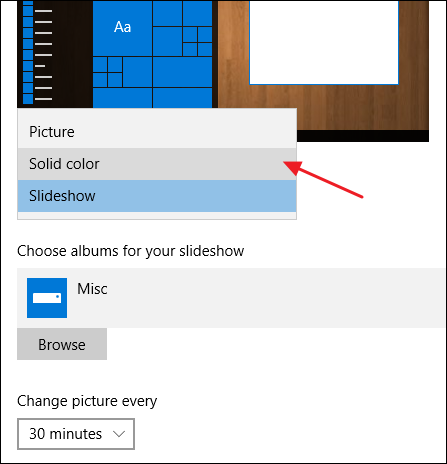
The next potential cause is letting Windows automatically pick an accent color based on your background. To test this one, head to Settings > Personalization > Colors and turn off the «Automatically pick an accent color from my background» option. Give it some time and see if the problem is resolved. If not, re-enable this setting and move on to the next possible cause.
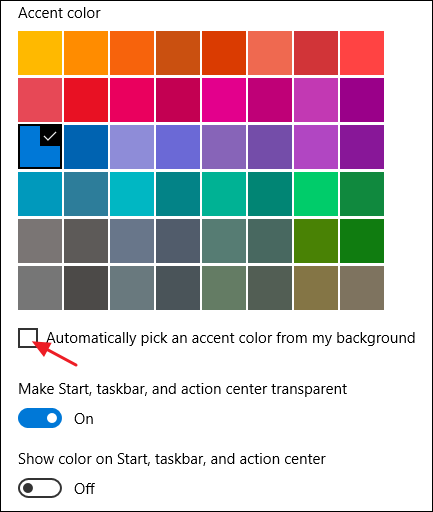
Next up is the transparency effect for the Start menu, taskbar, and Action Center. The setting is on the same screen as the last one at Settings > Personalization > Colors. Just turn off the «Make Start, taskbar, and action center transparent» option.
Can I Disable «Windows Shell Experience Host?»
No, you can’t disable «Windows Shell Experience Host», and you shouldn’t anyway. It’s an important part of delivering the visuals you see in Windows 10. You can temporarily end the task to see if that will resolve your problem. Just right-click it in Task Manager and choose «End Task.» Windows will restart the task automatically after a few seconds.
Could This Process Be a Virus?
«Windows Shell Experience Host» itself is an official Windows component and very likely not a virus. While we haven’t seen reports of any viruses hijacking this process, it is always possible we’ll see one in the future. If you suspect any form of malware, go ahead and scan for viruses using your preferred virus scanner. Better safe than sorry!
What is Windows Shell Experience Host and why is it so important? If you noticed your computer being unusually sluggish, one possible reason is that ShellExperienceHost.exe is misbehaving.
Note: Junk files and system files conflict frequently, resulting in issues with Windows Shell Experience Host and CPU usage. The easiest way to fix this is to scan your computer with a trusted PC optimization tool like PC Repair software.
When there is a Windows Shell Experience Host high CPU consumption, you’ll encounter various performance issues. They can include slow speeds, frequent app crashes, system errors, and weird behaviors.
The same thing can be observed when other processes, like lockapp.exe or YourPhone.exe, freeze or use up too much GPU. Whenever a Windows process takes up too much computer resources, the computer’s performance also suffers.
What Is the Windows Shell Experience Host?
The Windows Shell Experience Host, also referred to as ShellExperienceHost.exe, is a core component of the Windows operating system. So, you should not be surprised to see it running in the background.
Now, if you see it consuming too much CPU resources, don’t be quick to kill the process. It will cause more problems than you are currently experiencing.
The Windows Shell Experience Host was first released in Windows 10 as an integral part of the Windows operating system. The function of the Windows Shell Experience Host is to give a windowed interface for various universal apps on your computer.
Basically, it manages the graphical components of your PC, including the start menu, taskbar transparency, clock, visuals, background slideshow, and calendar, among others.
ShellExperienceHost.exe Basic Information
When it was first released, the Windows Shell Experience Host hogged a lot of CPU and memory on Window 10. However, with Windows continuously working to improve the latest OS, Windows Shell Experience Host no longer consumes too much CPU and RAM. So, if you discovered a spike in CPU or memory usage that is associated with Windows Shell Experience Host, this means some problems have occurred on your computer.
Here is some information to help you understand what the ShellExperienceHost.exe is:
- Developer: Microsoft Corporation
- Programs: Microsoft Windows Operating System or Application Frame Host
- Executable file/process: ShellExperienceHost.exe
- Operating system: Windows 10
- Folder location: subfolder of C:\Windows, such as
C:\Windows\SystemApps\ShellExperienceHost_cw5n1h2txyewy\ - Known file size: 2,095,968 bytes
Why Is Windows Shell Experience Host CPU Usage So High?
Under normal circumstances, Windows Shell Experience Host should not consume any of your CPU or RAM resources. You’ll only notice occasional spikes up to less than 10% when some of your graphical elements are changed. It should normally settle back down to zero after some time.
The ShellExperienceHost.exe process also typically consumes about 100-200 MB of RAM. You will find that this number also goes up occasionally, only to settle back down right away.
That is the normal usage of the Windows Shell Experience Host. On the other hand, if you see the ShellExperienceHost.exe process regularly eating more CPU or memory than normal, then you’ve got some issues you need to solve.
Some Windows users see a consistent 30% up to 50%, sometimes as high as 68% CPU usage, or more than several hundreds MB of memory use, then you need to figure out what is wrong.
One of the most common reasons is that your operating system is outdated and you’re using the earlier version of this software. We have mentioned earlier that the older version of Windows Shell Experience Host consumes a lot of resources, so you need to update it.
Using slideshow backgrounds also contributes to the Windows Shell Experience Host high CPU usage. This is because your computer has to keep up with the frequent visual changes, which can be taxing for the ShellExperienceHost.exe process.
Sometimes users also suffer from Microsoft Photos high CPU usage – be assured these system programs should not work in this way and these issues can be easily fixed.
CPU Usage Check
So, if you come across any of these problems, one of the things you need to check immediately is Task Manager.
Right-click on any empty part of the Taskbar, then choose Task Manager from the list (or you can press Ctrl + Alt + Del then select Task Manager from the options).
The Task Manager window will open to the Processes tab, where you can see the processes and services currently running on your computer.
If you see that the Windows Shell Experience Host CPU usage is unusually high, check out the troubleshooting steps below to fix it.
How to Fix High Windows Shell Experience Host CPU Usage
First, you need to perform a scan to check for any threats that might be causing the problem. However, if you didn’t find any malware after scanning your computer, then it is possible that the high CPU and RAM consumption is caused by other factors.
Solution #1: Update Windows
When you encounter this problem, the first thing you need to do is to check if there are any outstanding updates you need to install. When Windows Shell Experience Host was first introduced with Windows 10, it was known to consume a lot of computer resources. But with each Windows update released, the issue became less common.
To check if there are any pending updates, follow the steps below:
- Click Start, then choose Settings.
- Scroll down and click Update & Security.
- Click on Windows Update.
- Click the Check for updates button.
- If you see any available updates, click the Download and install link.
Just to be safe, you should set Windows Update to automatically download any updates as soon as they become available.
Solution #2: Turn Off the ‘Automatically Pick an Accent Color from my Background’ Option
If you’re using a slideshow as your background, you need to disable the automated accent colors option.
Every time the background changes, your system automatically chooses a new accent color to use. It causes more work for the ShellExperienceHost.exe process.
To switch off automatic accent colors on your computer, do the following:
- Click on the Start menu, then choose Settings. Alternatively, you can also press Win + I to get to the same destination.
- Click on Personalization > Colors.
- Scroll down to the Choose your accent color section and uncheck Automatically pick an accent color from my background.
- Close the windows and restart your computer for the changes to take effect.
Solution #3: Change Your Background
If you are fine with changing your background, then you should do so when you encounter this problem. To change your background, follow these steps:
- Navigate to Settings using the instructions above.
- Click Personalization > Background.
- On the left panel, choose a different type under the Background dropdown.
- You can choose either Picture or Solid color instead.
P.S. You might encounter a Windows Explorer running slow issue because the Windows Shell Experience Host or ShellExperienceHost.exe is causing havoc on your computer.
Is the Windows Shell Experience Host a Virus?
Since this process is consuming a lot of resources and behaving suspiciously, you might be thinking that it is malicious. And you have every right to be alarmed. It is possible that a malicious software has infected your computer and is posing as the ShellExperienceHost.exe process. So, if you get a malware warning from your antivirus while you see two ShellExperienceHost.exe processes operating in the background, then you’ve probably got malware.
The easiest method to get rid of a malicious ShellExperienceHost.exe process is by using an antivirus software. It is able to root out even the smallest threats. Simply scan your system and delete any threats detected by your security software.
To be sure that no threats are lurking on your computer, regularly clear out your junk files and optimize your computer using Outbyte PC Repair. This tool not only helps you recover some precious storage space, but it also helps prevent future system issues.
Download PC Repair
However, in most instances, an outdated OS or some graphical interface issues cause a misbehavior of the ShellExperienceHost.exe process. If this is the case, you can easily resolve the problem by following the solutions above.
Windows Shell Experience Host FAQ
What Is Windows Shell Experience Host?
The Windows Shell Experience Host is a core component of the Windows operating system that runs in the background to ensure certain Windows applications function properly. It gives a windowed interface to universal apps on the computer. Basically, the Windows Shell Experience Host manages the PC’s graphical components, including the start menu, taskbar transparency, clock, visuals, background slideshow, and calendar.
Is ShellExperienceHost.exe a Virus?
ShellExperienceHost.exe is the executable file that runs the Windows Shell Experience Host on your PC. It is not a virus, but a legitimate application developed and distributed by Microsoft Corporation. To check if the ShellExperienceHost.exe on your PC is the real thing, check its location. If the application is not located in the subfolder of C:\Windows, you may need to scrutinize it further.
Why is ShellExperienceHost.exe Showing High CPU usage?
ShellExperienceHost.exe is designed to use minimal computer resources, RSM/CPU, usually ranging in the rate of 10% or less or 100-200 MBs of RAM. High CPU usage can occur when your operating system needs an update or when you are using an older version of Windows Shell Experience Host on a new operating system.
What to Do If Windows Shell Experience Host is showing High CPU Usage
If you notice Windows Shell Experience Host showing CPU Usage, you may need to scan your PC for malware. If, after scanning the PC, it still shows high CPU usage, you may update your Windows. Ensure that you’re using a new version of the application that has no issues. Alternatively, you can change your PC’s background or turn off the ‘Automatically Pick an Accent Color from my Background’ option on your PC.
Table of contents
- What Is the Windows Shell Experience Host?
- How to Fix the Windows Shell Experience Host High CPU Usage
- Method 1: Update your operating system
- Method 2: Turn off automated accent colors
- Method 3: Disable slideshow background
- Method 4: Disable transparency effects
- Method 5: Check if the Shell Experience Host is malware
- Method 6: Run an SFC scan
- Method 7: Set a CPU usage limit for ShellExperienceHost.exe
- Method 8: Delete recently installed applications
- Method 9: Boot Windows in a clean environment
- Causes of the High Windows Shell Experience Host CPU Usage
- The Windows Shell Experience Host High CPU Usage: Fixed
- FAQ
If you experience the high Windows Shell Experience Host CPU usag e occasionally, it’s usually not a big deal if it resolves quickly. However, if it starts affecting your system’s performance, triggers crashes, or makes Windows nearly unusable, you need to fix it right away. Of course, regardless of the severity, you need to get to the bottom of it before it gets worse. If your memory usage is high because of the W indows Shell Experience Ho st, I have the right solution for you. Let’s begin.
What Is the Windows Shell Experience Host?
The Windows Shell Experience Host, also known as ShellExperienceHost.exe, is the Windows component responsible for the window display feature of universal Windows applications.
It is the component of the Windows shell (basically, the graphical user interface on Windows) that specifically handles universal apps.
The Windows Shell Experience Host process handles universal app interface behavior concerning elements like the taskbar, Start menu transparency, calendar, clock, background behavior, etc.
Important
Normally, you won’t even notice that the Windows Shell Experience Host exists.
This is because it is not designed to be noticed. It typically consumes little to no CPU resources. In fact, it usually doesn’t use anywhere near the amount of processor resources reported by annoyed users.
How to Fix the Windows Shell Experience Host High CPU Usage
If you are having a “Windows Shell Experience Host suspended” issue, use the methods discussed below to resolve the problem:
Method 1: Update your operating system
Being on the latest version of Windows can help solve many bugs and glitches in earlier versions.
So, make sure that you have installed all available OS updates. Some minor updates contain bug fixes and patches for system errors.
Here’s how to check for updates for your OS:
Windows 10
- Right-click the Start menu icon and select Settings to launch the Settings app.
- On the main Settings screen, select Update & Security .

- Switch to the Windows Update tab on the Update & Security screen and click the Check for updates button.
- The OS will check the Windows Update servers and download any available updates.
- After downloading the updates, you can reboot your system to start installing them or schedule the reboot for later.
With the latest OS installed, ShellExperienceHost.ex e and other system processes should no longer use more than the expected CPU percentage. Windows 11
- Open the Settings window and select Windows Update.
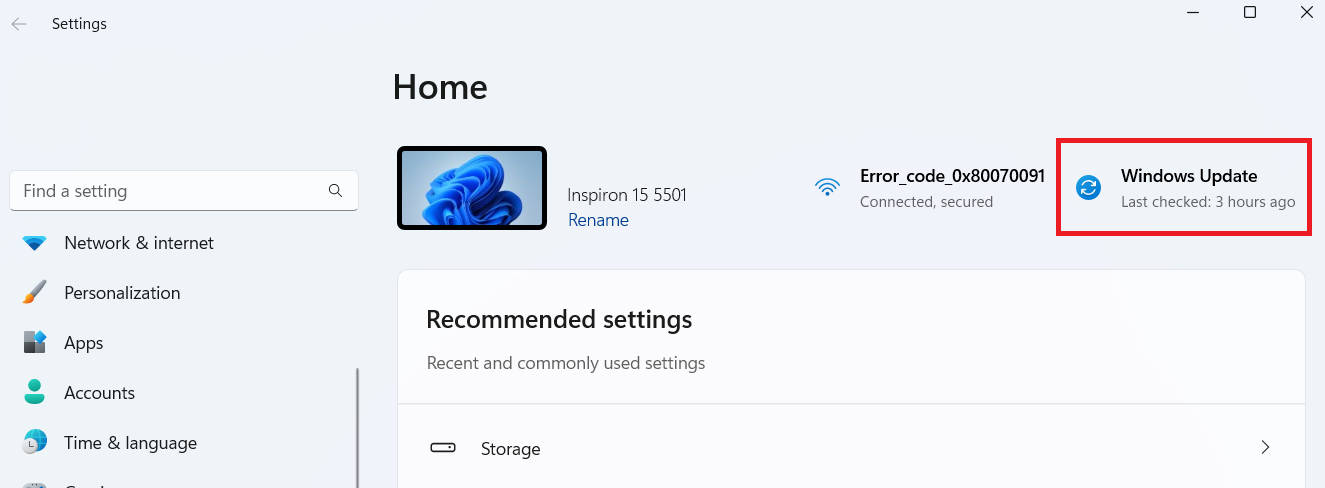
- Click on Check for updates to install any available updates.

Related: Timeline of All Windows OS Versions: From Start to Now
Method 2: Turn off automated accent colors
The Shell Experience Host process makes visual changes to your desktop and its background. The more changes are made on the desktop, like creating custom themes , the more work the process has to do and the more CPU it uses. This may be the cause of the S hell Experience Host’s high CPU usa ge on PCs whose desktop background is a slideshow.
In addition, your PC picks a new accent color by default to match the new background image. And that makes the process even more complicated.
Try turning off automatic accent colors to lessen the CPU consumption. Here’s how to do it:
- Press
Windows + Ito open the Settings window. - On the main Settings screen, select Personalization .
- Then, switch to the Colors tab.
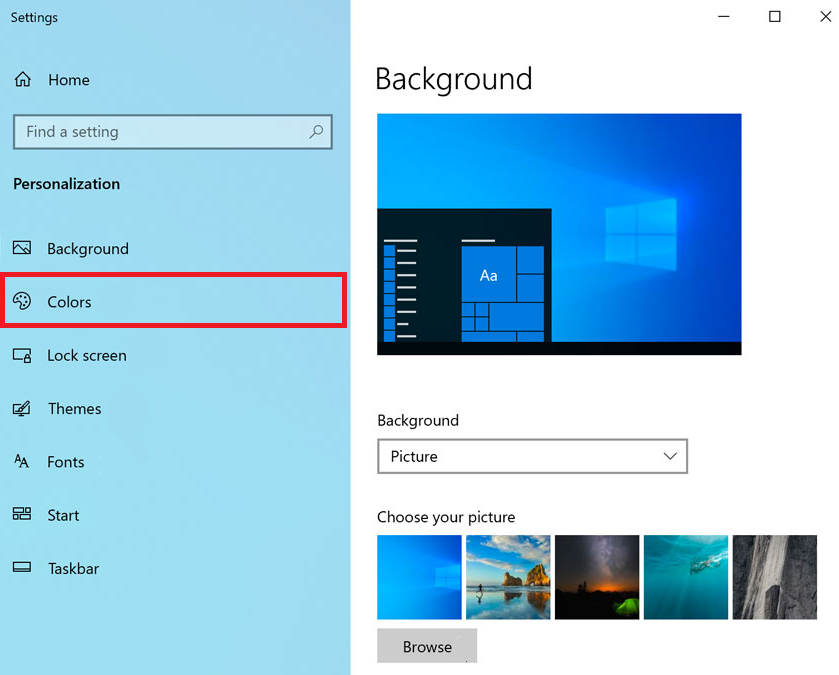
- Scroll down the Colors tab to the Choose your accent color section.
- Untick the Automatically pick an accent color from my background checkbox.

- Exit the Settings app and check the CPU usage of ShellExperienceHost.exe in Task Manager after a few minutes.
- Your issue has been fixed if the Shell Experience Host process now uses a moderate to low CPU percentage.
However, if the CPU usage by S hellExperienceHost.exe keeps jumping, try the next solution.
Method 3: Disable slideshow background
If turning off automatic accent colors doesn’t help, changing your background style altogether may yield a better result.
You can switch the slideshow style to a solid color or choose a static picture instead. Since either alternative is fixed, the W indows Shell Experience Hos t will have less work to do, and this can stop the 100% CPU usage .
Follow the steps below for Windows 11:
Note
Windows 10 also has a similar process to turn off your slideshow background.
- Launch your Settings app by pressing
Windows + I. - On the main Settings screen, select Personalization , and click on Background .
- Click on Picture or downward arrow to expand the options and select Solid color or Picture .
Check the process in Task Manager after a few minutes. If the Shell Experience Hos t process now uses a moderate to low CPU percentage, the problem has been fixed.
Method 4: Disable transparency effects
Another reason you could be experiencing too much CPU usage on the Windows Input Experience is the transparency effects. Try turning it off to see if that fixes the problem:
Windows 10
- Open the Settings window and head to System .
- Select Ease of Access and select Display .
- There, you should see a Show transparency in Windows toggle.
- Turn it off if it’s on.
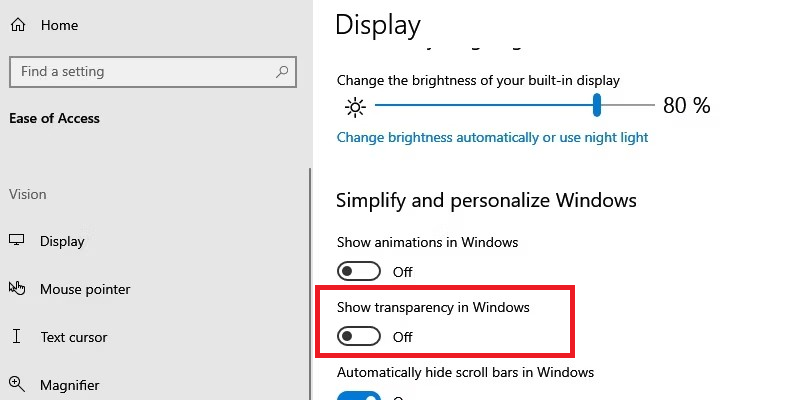
Windows 11
- Press
Windows + Ion your keyboard to open the Settings app. - Scroll down and select Accessibility .
- Then, choose Visual effects .
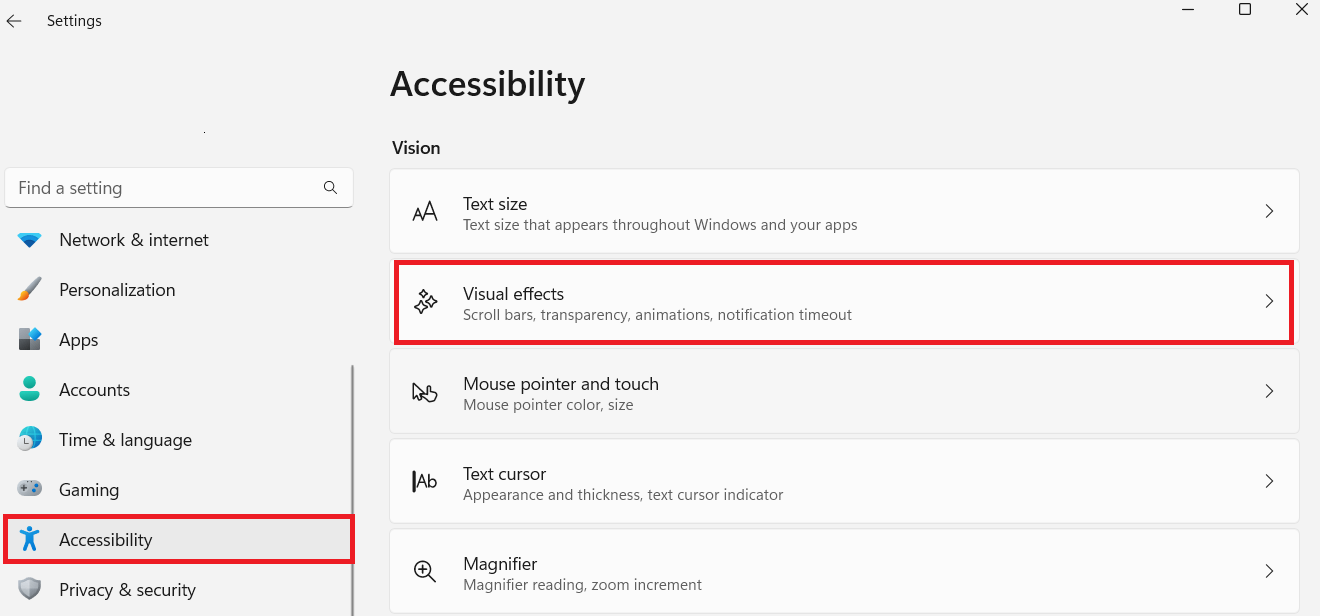
- Toggle the On/Off button beside Transparency effects to disable it.

